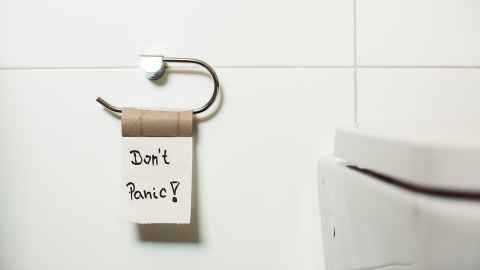Don’t panic. We can do this together.
12 August 2020
Opinion: Aotearoa surpassed 100 days without a case of community transmission of Covid-19. On 11 August that virus-free streak ended and we’re moving back up the alert levels. Associate Professor Siouxsie Wiles explains why that has to happen.

For months now, we’ve been intercepting cases of Covid-19 at the border. But just as has happened in many other countries, somehow the sneaky bastard has got in. At a late press conference on 11 August, Prime Minister Jacinda Ardern and Director-General of Health Ashley Bloomfield announced the country had four new Covid-19 cases that couldn’t be traced back to international travel or anyone working at the border or in managed isolation and quarantine. The four cases are all members of the same family. Now the race is on to break any chains of transmission from those four cases and find out how they got the virus.
The good news is that the government is sticking with its “go fast and go early” elimination strategy.
At the press conference, the prime minister announced that as of midday today Auckland moves to alert level three and the rest of the country to level two. This initial move is for three days to give the contact tracing teams time to try to work out how the family got infected. The fact it can’t immediately be traced back to the border measures suggests there are other cases in the community and at least one of those will link back to the border. In other words, the family are part of a chain of transmission and we have to find all the links.
Putting Auckland at alert level three is all about restricting people’s movements to stop those links from becoming new chains of transmission. It’s a wise move. Victoria took something like five weeks to put metropolitan Melbourne under the kind of restrictions Auckland is moving to. In the course of those five weeks they went from a handful to thousands of cases. More than 100 people have died in the last week alone.
By moving Auckland to alert level three and the rest of the country to alert level two now we’re not going to let that happen here. That may well mean that we need to stay at a higher alert level for more than three days, so start preparing yourself for that.
Remember, we’ve eliminated Covid-19 once and we can do it again. And just like last time, we’ll do it by being a team of five million. Wherever you are in New Zealand, spend the next few days making a note of where you’ve been over the last two weeks, and whom you spent time with. That will help our contact tracers if it turns out you have Covid-19. If you experience any symptoms at all, call Healthline or your GP to get tested. If you hadn’t already got yourself some masks, check out some of the videos below to make your own.
Don’t panic. Be kind. We can do this.
Associate Professor Siouxsie Wiles is a microbiologist from the Department of Molecular Medicine and Pathology in the Faculty of Medical and Health Sciences' School of Medical Sciences.
This article reflects the opinion of the author and not necessarily the views of the University of Auckland.
Used with permission from The Spinoff, 'Siouxsie Wiles & Toby Morris: Don’t panic. We can do this. Together', 12 August 2020.
Media contact
Paul Panckhurst | Media Adviser
Mobile: 022 032 8475
Email: paul.panckhurst@auckland.ac.nz